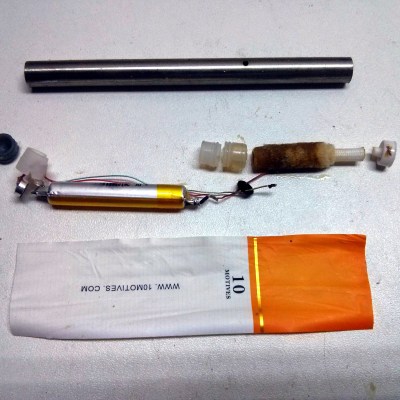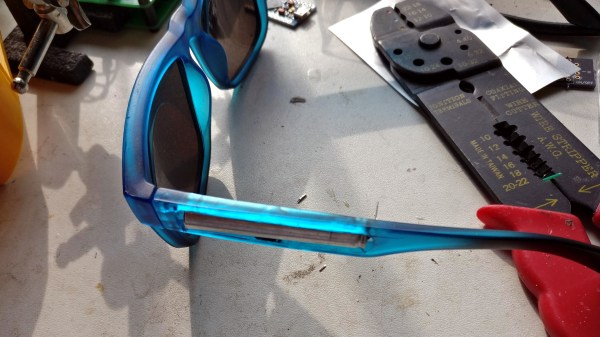
E-cigarettes use electrical power to rapidly heat and vaporize a base liquid such as propylene glycol, and that power comes from a battery. These devices are functionally straightforward but it can be a messy process on the inside. Thankfully though the batteries can be salvaged once components like heating elements either gum up or burn out.
[facelesstech] decided to use the battery from an e-cig as the power source for a smart sunglasses project, which uses two RGB LED rings to put on a light show. Opening up the device it was discovered that the battery was a straightforward lithium-polymer cell, in AAAA size. If you’ve ever torn open a 9 v battery and discovered the six diminutive cylinders inside, an AAAA cell is about the same size as one of those. However, the battery from the e-cig is both rechargeable and has a nominal voltage of 3.7 volts, which can happily drive a microcontroller project. The small battery fit nicely into one arm of the glasses, and when covered with heat-shrink, was hardly noticeable. The battery charger doesn’t fit inside the glasses, but one can’t have everything.
The ability of an e-cigarette to pump out clouds of vapor has led to some interesting hacks. One such is a DIY portable fog machine, which opens all kinds of doors for costuming applications.














